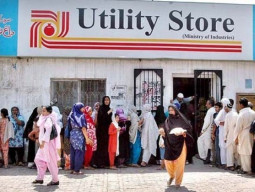
The decision taken by the prime minister was that an official motorcade should not exceed the limit of seven vehicles for VVIPs such as the president and the prime minister, and six vehicles for lesser mortals like provincial governors and chief ministers. An exception was, of course, made for visiting heads of state that would be accorded the same courtesy as the two top functionaries in the pecking order.
One got the impression from the report that in the recent past the motorcades were considerably larger than the standard laid down and that the prime minister was imposing some kind of austerity measure in the interest of a country which had already witnessed enough extravagance and waste.
The question is: does the prime minister really need an armed chaperone of seven cars every time he steps out to perform a stone laying ceremony or calls on the family of some old codger from the party who has pegged down from natural causes? And that too in a country that has an external debt of 51 billion dollars and where petrol is certainly not cheap?
It is in moments like these that one remembers somewhat wistfully statesmen like President Ayub Khan. Whether resplendent in bemedalled corpulence or in the safari attire he helped to fashion, his motorcade consisted of an outrider on a motorcycle, the car in which he sat, and a station wagon which followed close behind — just in case the VIP vehicle sprung a puncture.
In fact, one doesn’t have to go back that far in time for a lesson in forethought and prudence. Mr Mahmoud Haroon, when he was governor of Sindh, insisted on driving his own car to the governor’s house and initially refused the police escort that skulked around his residence. It was only when the police absolutely insisted that he finally agreed — but limited the attachment to one vehicle.
VVIP travel is an unmitigated nuisance for all members of the public, particularly parents who have to collect children from school. They can’t understand why a public thoroughfare has to be closed two hours before the expected arrival of an official motorcade. And then there are, of course, the police sirens whining in different keys in the top register in a kind of informal competition, as they produce their atonal concerto.
The trend for those highly fortified bullet-proofed convoys that flash past at 80 miles an hour, tinted window panes up, turrets of machine guns of police mobiles both fore and aft protruding menacingly at invisible targets, had started during the tenure of former president Parvez Musharraf.
Unfortunately, according to the press, it was during two of his visits, while sections of the city were blocked, that a couple of chronically ill patients died because their ambulances, entangled in stagnant traffic, couldn’t reach a hospital in time.
Why don’t VVIPs use a helicopter to traipse around the city? It’s much cheaper and the public would be spared much inconvenience.
Published in The Express Tribune, September 30th, 2010.













COMMENTS
Comments are moderated and generally will be posted if they are on-topic and not abusive.
For more information, please see our Comments FAQ